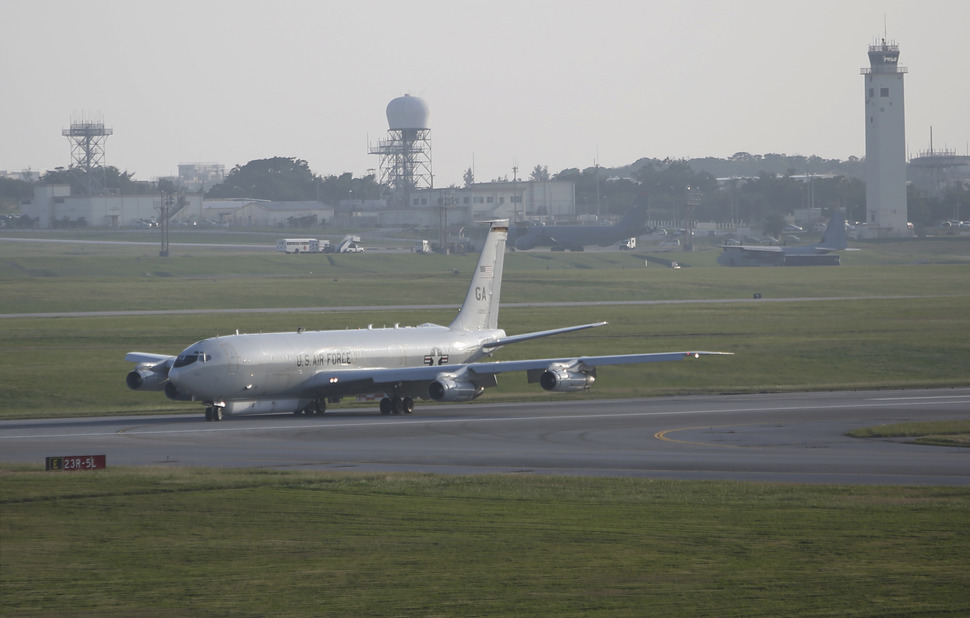 |
|
The E-85 Joint STARS, a US Air Force airborne ground surveillance aircraft. (Yonhap News)
|
E-85 J-STARS capable of closely observing N. Korea’s military activity
The E-85 Joint STARS (J-STARS), a US Air Force airborne ground surveillance aircraft, reportedly conducted an operation flight from the Greater Seoul area toward the East Sea. The aircraft, which is capable of closely observing activities with North Korean surface-to-surface missiles, transporter erector launchers (TELs), coastal and long-range artillery, and submarine bases, was making its first operation flight over the Korean Peninsula and surrounding waters since early last year. Its journey appears to signal intensifying US reconnaissance activities against North Korea since the latter’s launch of the Pukguksong-3 submarine-launched ballistic missile (SLBM) on Oct. 2. According to information on the military aircraft tracking site Aircraft Spots on Oct. 13, an E-8C conducted a flight on Oct. 11 from the Greater Seoul area at the southern end of Seoul toward the East Sea. The aircraft in question appears to have been one of two E-8Cs deployed by the US on Oct. 5 to its Kadena Air Base on Okinawa. The E-8C departed from Kadena Air Base on Oct. 10. Equipped with a joint surveillance and target attack radar system, the aircraft is reportedly capable of closely monitoring North Korean troop and equipment movements from an altitude of 9 to 12km. It measures 44.2 x 46.6 x 12.9m and has a cruising speed of Mach 0.8. Once in flight, it can remain in the air for 9 to 11 hours, with a cruising distance of up to 9,270km. On Oct. 8, an RC-135S Cobra Ball aircraft took off from Kaneda Air Base and flew over the waters near Japan. Equipped with state-of-the-art electronic optics, the aircraft is reportedly capable of tracking ballistic missile trajectories at close range.
 |
|
Pyongyang’s Korean Central Television (KCTV) broadcasted a test launch of an international ballistic missile (ICBM) on Oct. 8. (Yonhap News)
|







